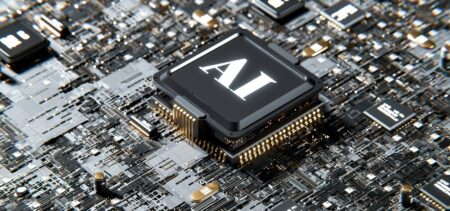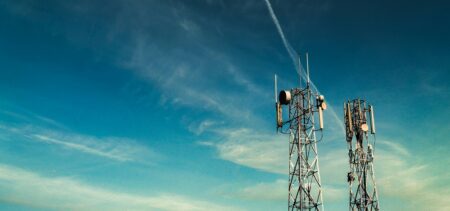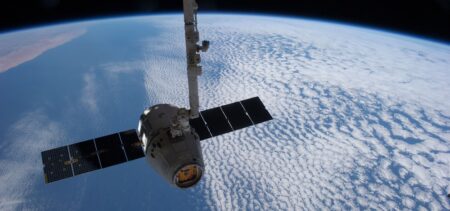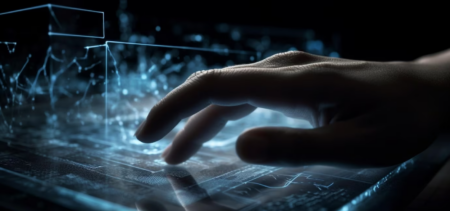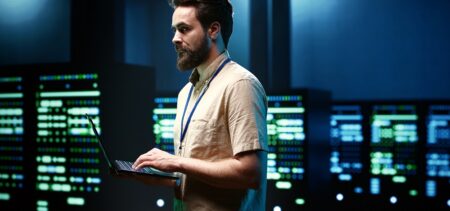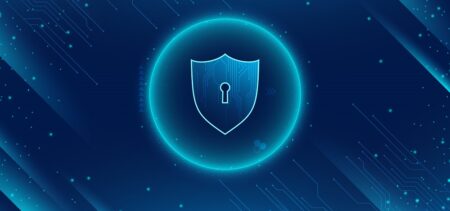When we think about the impact of climate change, we often think about extreme weather events: rampant wildfires, monsoon floods, drought, and cold snaps. Climate change and associated hazards pose a significant threat to how we do business, connect, and communicate by interfering with and damaging network infrastructure. Calls for a net-zero future are not only about the long-term impacts on human life and natural ecosystems but also our immediate way of life.
One aspect of climate change not typically spoken about is the impact on networks and connectivity. Building climate-resilient connectivity infrastructure is important to future-proof network cables and ensure we maintain communication throughout even the worst weather events.
Extreme Weather: The Link Between Climate Change and Undersea Network Cables
The National Oceanography Centre (NOC) released a report based on a global study that delves into the effects of climate change and natural hazards. Naturally, when looking at the impact of rising sea levels and coastal flooding, the cost to human life is the primary concern, followed by the loss of biodiversity (in both fauna and flora). Network infrastructure is only just becoming an area that garners significant attention. This has given rise to organizations like the NOC and their work. The NOC report suggests that the continued effects of climate change pose a significant risk to the 1.3 million kilometers of underwater fiber-optic network cables that enable the internet.
Infrastructure for the undersea cable network comprises fiber optic cables, data centers, internet traffic exchange points, and termination points. These essentially operate as the “nerve centers and arteries of the vast global information network.” This support system of the undersea network is terrestrial and lacks waterproof protection, making them vulnerable to damage during floods and storms, and the impending threat of rising sea levels. Salty seawater will also damage connectors and optical transponders through corrosion, and major internet service providers like AT&T will be affected, subsequently affecting the connectivity of millions.
According to the study’s senior author, Professor Paul Barford, “Most of the damage that’s going to be done in the next 100 years will be done sooner than later. That surprised us. The expectation was that we’d have 50 years to plan for it. We don’t have 50 years.”
As of 2030, experts predict that sea levels will have risen by approximately one foot. This will result in over 770 Points of Presence (PoPs) being submerged, leaving millions of remote internet users without connection, and 235 data centers will also be waterlogged. These projections are set to become grimmer by 2075 when approximately 780 PoPS and 242 data centers will be submerged due to a four-foot rise in sea levels.
Because our economic activities are driven by and deeply tied to internet access, another aspect to consider regarding climate-resilient network infrastructure is the cost to the country. Even a brief period of internet outage due to rising sea levels will have a negative and significant impact on economic activity. Brookings undertook a study of 81 internet shutdowns over the course of a year and estimated that internet blackouts amounted to a cost of $2.4 billion in global GDP. India took the deepest loss, at a cost of almost $1 billion, while Saudi Arabia shouldered a loss of $465 million, and Morocco came in third with a GDP loss of $20 million.
These cables are responsible for 95% of online traffic globally, which includes sensitive operations like financial transactions and social media communications. The underwater sea network was designed with resilience in mind, able to withstand natural hazards like storms, earthquakes, and rising sea levels. Scientists at the NOC have worked to provide a global perspective on how climate change will impact where these hazards will occur and how the severity of these hazards may threaten infrastructure resilience.
According to the report’s lead author, Dr. Mike Clare, “Subsea cables are crucial to our daily lives, enabling remote working, education, financial trading, and access to telemedicine. As we are increasingly reliant on global networks, it is essential that we assess any potential future disruptions that may emerge as a result of climate change.”
The current body of research on the effects of climate change focuses primarily on terrestrial impact; the flooding on coastal communities, the mud, and landslides that destroy homes and take lives, and the heatwaves that have hindered rail networks. The NOC report, on the other hand, shows that threats like storms, and rising sea levels are undergoing changes, affecting new regions and potentially threatening the undersea cable network.
Dr. Clare goes on to say that “our reliance on cables that are no wider than a garden hose is a surprise to many, who regard satellites as the main means of communication. But satellites simply don’t have the bandwidth to support modern digital systems. The ‘’Cloud’ is not in the sky – it is under the sea. This study and ongoing research will help mitigate any social and economic impacts that could arise if the industry is not well-informed and prepared.”
How Natural Disasters are Predicted to Impact Network Connectivity
The International Cable Protection Committee (ICPC) is an organization that works to protect the subsea cable network and has worked with several climate science institutions to uncover the threats to the network and the best ways to develop infrastructural resilience. The ICPC developed a report looking at the future of the subsea cable network, which detailed the various ways climate change poses immediate risks to the network and its terrestrial landing stations.
According to the ICPC, the network cables and stations have been designed to operate for approximately 30 years, but the threats they’re meant to withstand have increased substantially; in intensity and frequency. The Under-Secretary-General for Legal Affairs and United Nations Legal Counsel, in recognizing the knock-on effects, made this statement: “Sea-level rise is projected to negatively affect various economic sectors, including by damaging electrical and telecommunication support facilities.”
Here are a number of climate-related events that have affected subsea network cables across the globe:
- In 2020, a sediment flow off the shore of Angola damaged undersea cables responsible for connecting West and South Africa, creating internet shortages at a critical moment, the beginning of lockdown for COVID-19. This was caused by a large river flood in the deep-sea Congo Canyon.
- Hurricane Irma, which struck the Caribbean in 2015, cut off network connectivity to 7 million people. The storm destroyed landing stations and cables, and the subsequent floods damaged land-based terrestrial cables.
- In 2012, storm surges disconnected New York’s internet, while in 2009, tropical cyclones damaged subsea cables that provided internet connectivity to Taiwan.
Apart from the destructive force of storms and extreme weather events, there is also the very real threat of rising sea levels. With the increased melting of glaciers and ice sheets, sea levels are rapidly rising. A study examining the impact of this phenomenon found that thousands of kilometers of land-based internet infrastructure across the USA may be submerged by 2030; these are cables that have not been built to withstand water immersion.
How Can We Better Protect the Subsea Cable Network Against Climate-Related Threats?
Adaptation and mitigation measures are required to protect the subsea cable network, and experts have started to delve more deeply into the actions that need to be taken to protect the subsea cable network. The ICPC’s climate change position paper states that “the global climate has been and will likely continue warming at an unprecedented rate as a result of human-induced greenhouse gas emissions.” The ICPC believes that “sea-level rise and climate change [need to] be considered in future route and landing station planning, as well as assessing the risk posed to existing systems.”
Currently, several adaptation and mitigation measures are being employed to protect underwater network cables against the impacts of climate change. Increasing armor and/or cable burial protection at shorelands where erosion worsens is one method used to protect infrastructure. Experts are also looking into the efficacy of mitigation efforts against threats related to deep sea fishing; this includes liaising with fishermen, desktop studies, route clearance of discarded fishing gear and using more resistant cables.
Existing infrastructure may need to be retrofitted, or managed differently, given climate change. Lastly, additional infrastructure, such as sea walls, will need to be constructed to address the physical impacts of climate change. For optimal results, hard defenses and engineered solutions should be used alongside natural interventions like wetlands. Both public and private sector representatives have been hard at work to take actions that strengthen climate resilience. OECD and G20 countries have been aligned in efforts to adopt best practice measures, share their challenges, and create non-prescriptive guidelines to enhance climate-resilient infrastructure per their national priorities.
Conclusion
While much has been studied, published, and written about the impacts of climate change on nature and humanity, organizations have started to focus on the more immediate effects on our infrastructure, which pose threats to our way of life. The subsea network of cables is the backbone of the internet and carries the bulk of digital traffic and communications.
When extreme weather events occur, they pose immense risks to the underwater cables, terrestrial cables, and onshore landing stations, leaving affected countries without the infrastructure to connect online. This has devastating impacts on immediate relief efforts and impacts the economy.
Internet access is considered a right today, and with the exacerbated extreme weather conditions due to climate change, this is under enormous pressure. Adaption and mitigation efforts are needed to protect the subsea network against the impending damage and destruction climate change poses.



